Many beginning photographers dream of taking images in far off places of exotic birds and there is nothing wrong with that. But we shouldn’t overlook the advantages of photographing birds close to home.
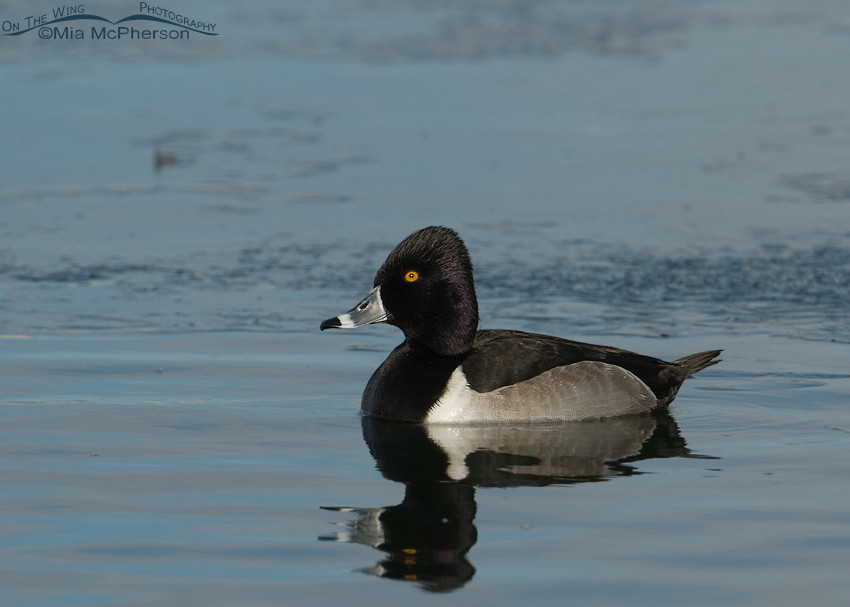 Male Ring-necked Duck on an icy pond – Nikon D200, tripod mounted, f8,1/800, ISO 250, Nikkor 200-400mm VR with 1.4x TC at 400mm, natural light.
Male Ring-necked Duck on an icy pond – Nikon D200, tripod mounted, f8,1/800, ISO 250, Nikkor 200-400mm VR with 1.4x TC at 400mm, natural light.
The Ring-necked Duck (Aythya collaris) photo above was taken at a city park pond a few blocks from where I live on a cold but sunny winter day. The duck was closer to the shoreline than it would be in summer because of the ice in the center of the pond. I’ll know this coming winter to look to see when the ice forms and will be able to anticipate that the ducks and grebes may be closer to shore.
Another reason to photograph birds closer to home are the resources that you can tap into to locate good birding spots.
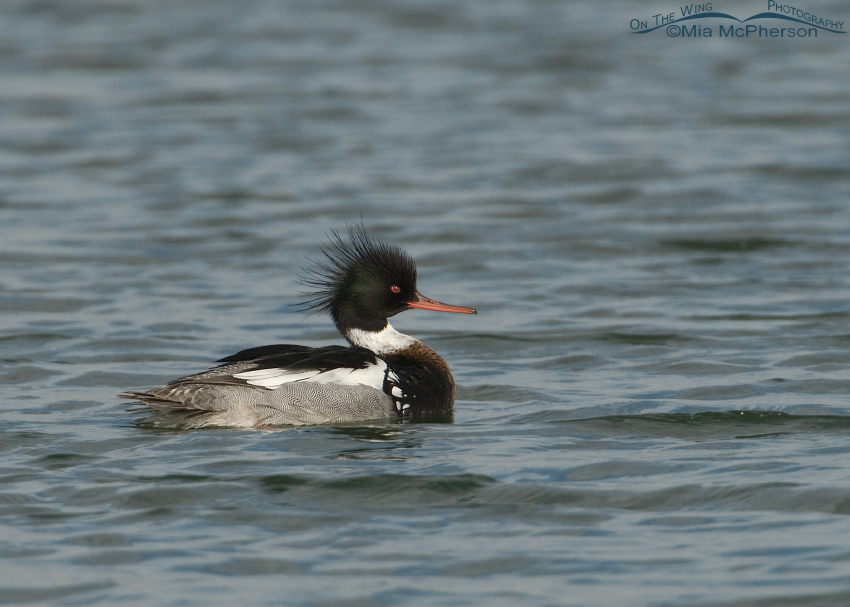 Male Red-breasted Merganser – Nikon D200, tripod mounted, 1/800, ISO 400, Nikkor 200-400mm VR with 1.4x TC at 400mm, natural light
Male Red-breasted Merganser – Nikon D200, tripod mounted, 1/800, ISO 400, Nikkor 200-400mm VR with 1.4x TC at 400mm, natural light
The Male Red-breasted Merganser (Mergus serrator) photograph above was also taken at the pond near where I live, in fact all of the images you will see on this post were taken there.
This merganser stayed at the pond for several weeks allowing me plenty of time to practice my exposure settings for this species in breeding plumage. The high contrast of blacks, whites and reds make it a challenge to expose correctly. Because of my close proximity to this location I was able to spend quite a few mornings photographing this bird. I didn’t have to travel far plus I could sit and sip my coffee while I waited for it to get closer.
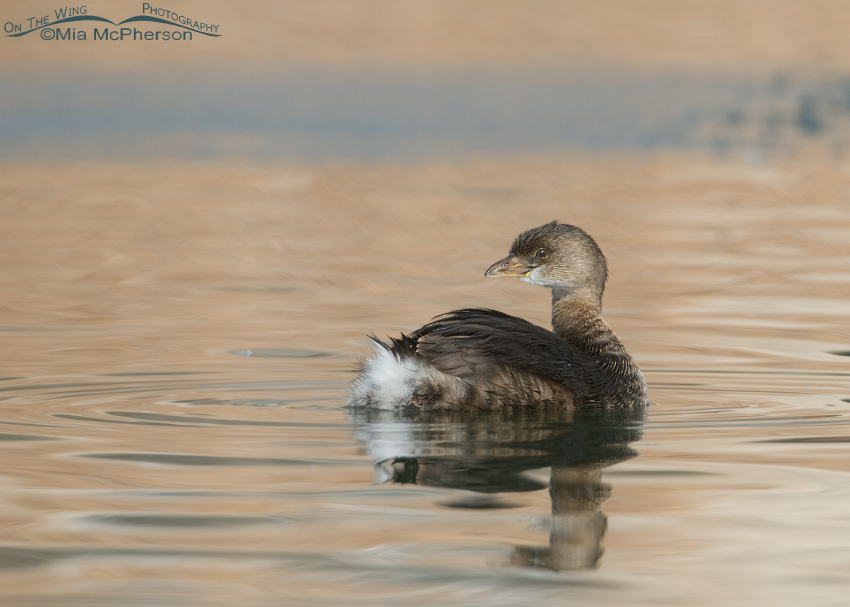 Pied-billed Grebe look back – Nikon D200, tripod mounted, f7.1, 1/640, ISO 250, Nikkor 200-400mm VR with 1.4x TC at 400mm, natural light
Pied-billed Grebe look back – Nikon D200, tripod mounted, f7.1, 1/640, ISO 250, Nikkor 200-400mm VR with 1.4x TC at 400mm, natural light
I took this Pied-billed Grebe (Podilymbus podiceps) photo above because when I looked through my viewfinder I loved the golden tones of the water caused by the reflection of a stand of dried Phragmites along the shoreline and was very pleased with the pose of the grebe in this image.
I don’t believe that you need to go to exotic locations to create beautiful and compelling images, you can most likely accomplish that within less than 10 -15 miles from where you live. Even a town dump might be a fine location if you watch the background!
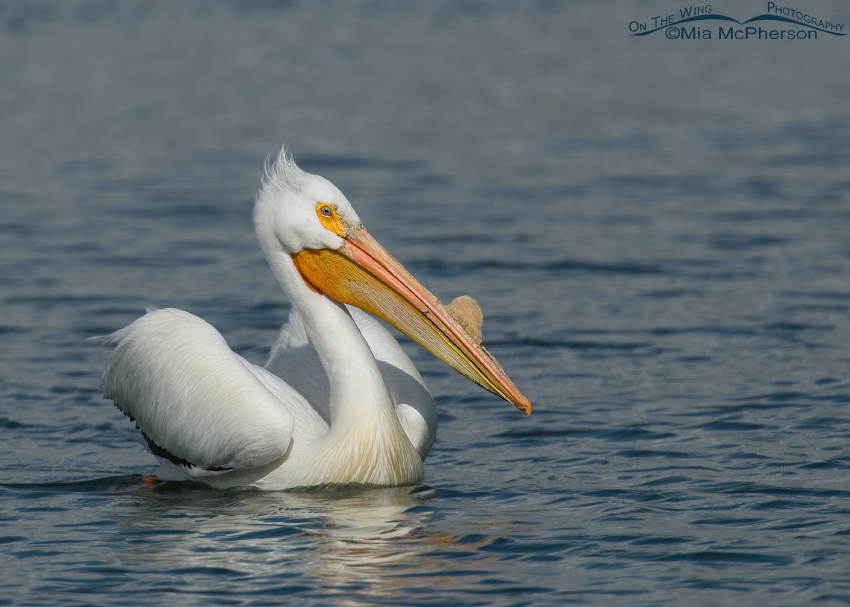 American White Pelican about to lift off – Nikon D200, tripod mounted, f7.1, 1/2000, ISO 250, Nikkor 200-400mm VR with 1.4x TC at 400mm, natural light
American White Pelican about to lift off – Nikon D200, tripod mounted, f7.1, 1/2000, ISO 250, Nikkor 200-400mm VR with 1.4x TC at 400mm, natural light
A flock of American White Pelicans (Pelecanus erythrorhynchos) flew down to the pond on the day I took the image above. I liked the pose this one took and how the feathers on the top of the head lifted up with a slight breeze.
Get to know the managers, caretakers and visitors to your local parks, greenspaces and other areas, you will be surprised at how much you can learn from talking to people. Quite often a big lens is enough to encourage strangers to speak to you and they might share another location you might not be aware of.
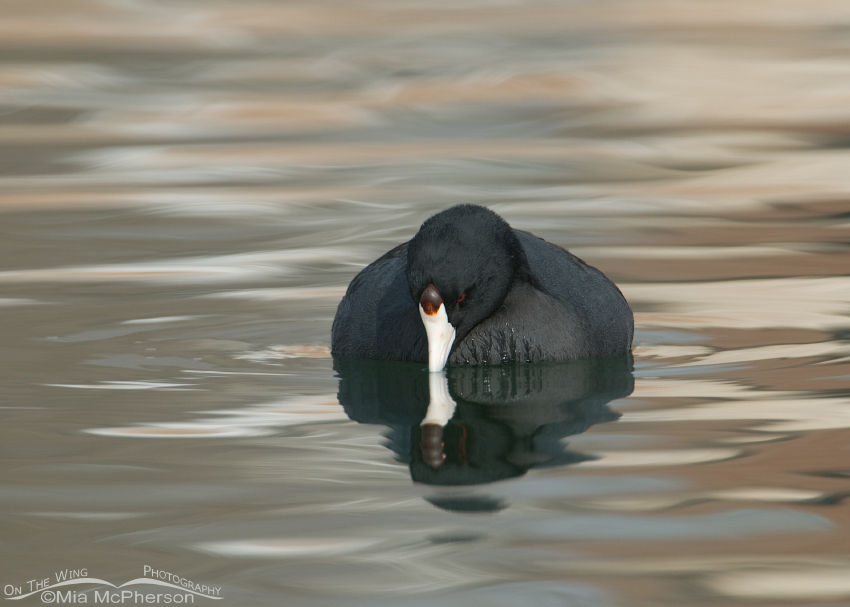 American Coot and reflections – Nikon D200, tripod mounted, f7.1, 1/500, ISO 250, Nikkor 200-400mm VR with 1.4x TC at 400mm, natural light.
American Coot and reflections – Nikon D200, tripod mounted, f7.1, 1/500, ISO 250, Nikkor 200-400mm VR with 1.4x TC at 400mm, natural light.
American Coots (Fulica americana) can be challenging to photograph because of their dark plumage and by photographing close to home you will have time to learn how to expose them correctly.
By knowing your photographic locations well, learning what species of birds are present and at which time of the year, knowing the lighting in those locales at different times of the day and becoming knowledgeable about the subjects you want to photograph you can produce images that rival or surpass those taken in exotic locations.
And you won’t have to take out a second mortgage to do it.
Life is good.
Mia


Great piece, Mia, and I agree! I don’t get to photograph much except close to home, and have honed many of my skills on birds we commonly find in urban areas. Or, species that travel through and find sanctuary in urban enclaves.
I love it and I enjoy photographing the under-appreciated species like Starlings and pigeons. In addition to the advantages you mention here, one other clear bonus is that city or community birds tend to be a tad more habituated and less skittish … because they’re not hunted in urban areas. There are several urban sanctuaries around the San Francisco Bay Area where it’s a pure joy to watch, close up, duck species (as one example) who in more wild settings will flush at the sound of a twig snapping.
Hi Mia
Great photos. I have always wondered what time of day you set out and whether its for only a couple of hours.
Do you go out in a group especially when you have a chance to encounter the bears and wolves?
A bit more personal I think its great to see the image of you sitting in the water but we never see your face.(Unless I have missed one of you bloggs.
I have been known to lay on the ground surrounded by on lookers but usually we are going somewhere else I wouldn’t lay in the wet sand.I guess a ground sheet or change of clothes would be the answer.I am in my late 50’s and have trouble getting up as I have back problems and arthritis. It is a funny site to see me getting up but I do believe its for a better photo.
Mia,
I agree 100% with learning to photograph your local area. May I suggest eBird as another resource?
http://ebird.org/content/ebird/
Click on Explore Data, then Explore Hotspots. From there you can type in names of hotspots, general locations, or use the map to navigate. What you are looking at are locations where birders have reported seeing birds. You can click on lists and see what birders are currently seeing. You can also click on the list and get a Google map. This can also be handy when planning a trip to a new location to see where the birds are.
Great advice, Mia! Your spectacular photographs provide compelling evidence that it’s worthwhile to check the local park!
Mia, you darling, I feel like you wrote this post just for me … you’ve given me some wonderful ideas!!! Beautiful images, as always!!!
I have also discovered that when I opened my eyes to the array of birds in my immediate vicinity that there were/are a LOT of them. Magic every day.
I adore your meganser’s hair do – he puts any Goth I have ever seen to shame.
Hi Mia, love this post. Your message struck home with me. I lived a two minute walk from a pond in New England for five years. I got hooked on photography because of the simple wildlife around the pond. You are so right about getting to know the behaviors and habits of the birds, like their mating routines and nesting and the feeding and eventual flight of the fledglings. It’s all thrilling.
And you are absolutely right about a dump! Years ago I lived in a town where I made a weekly trip to our town’s dump. Through the summer it was nearly unbearably stinky! In late August/early September some wild and tall grasses near the exit would turn golden. On a sunny day, if I crouched a bit, the tips of the grass would be against a blue sky. I took many photos through the years of that row of grass. I’d always think, “People would never guess where these photos have been taken! Thank God photography doesn’t capture scent!”
As always, thanks for a most enjoyable post. Your photos are outstanding.
Mary
Wonderful images (esp. the white pelican) and info. I went to UtahBirds.org and was amazed at how comprehensive the section on gulls is! Thank you Mia.
No second mortgages! Good advice. I like feeling not pressured when outdoors snapping shots off of birds. Local birds allow for a miss or two….and lots of opportunity to hone in on those camera skills:) Also dead on about the lighting issues:) And great pics:)
Great photos! Interesting that you should have published this article today… yesterday, I posted a photo essay on my “commuting birding” in Metro Vancouver on Bird Canada (with a few additional photos on my personal blog) arguing something similar. Now it helps that we both live in places that have spectacular birds to photograph, of course!
Wonderful series of photos and great advice Mia ,thank you.
Oh what a beauty, your pictures are amazing! Especially the second one:)
Firstly simply stunning photos!
Secondly I agree with you 100% photographing the birds on your doorstep lets you get much better photos (usually) than traveling to see new birds. As you rightly say you know their habits better and can position yourself where you will be able to get the shots you want.
Fabulous images, Mia. I always look forward to visiting your blog each morning. That Merganser shot is my favorite.